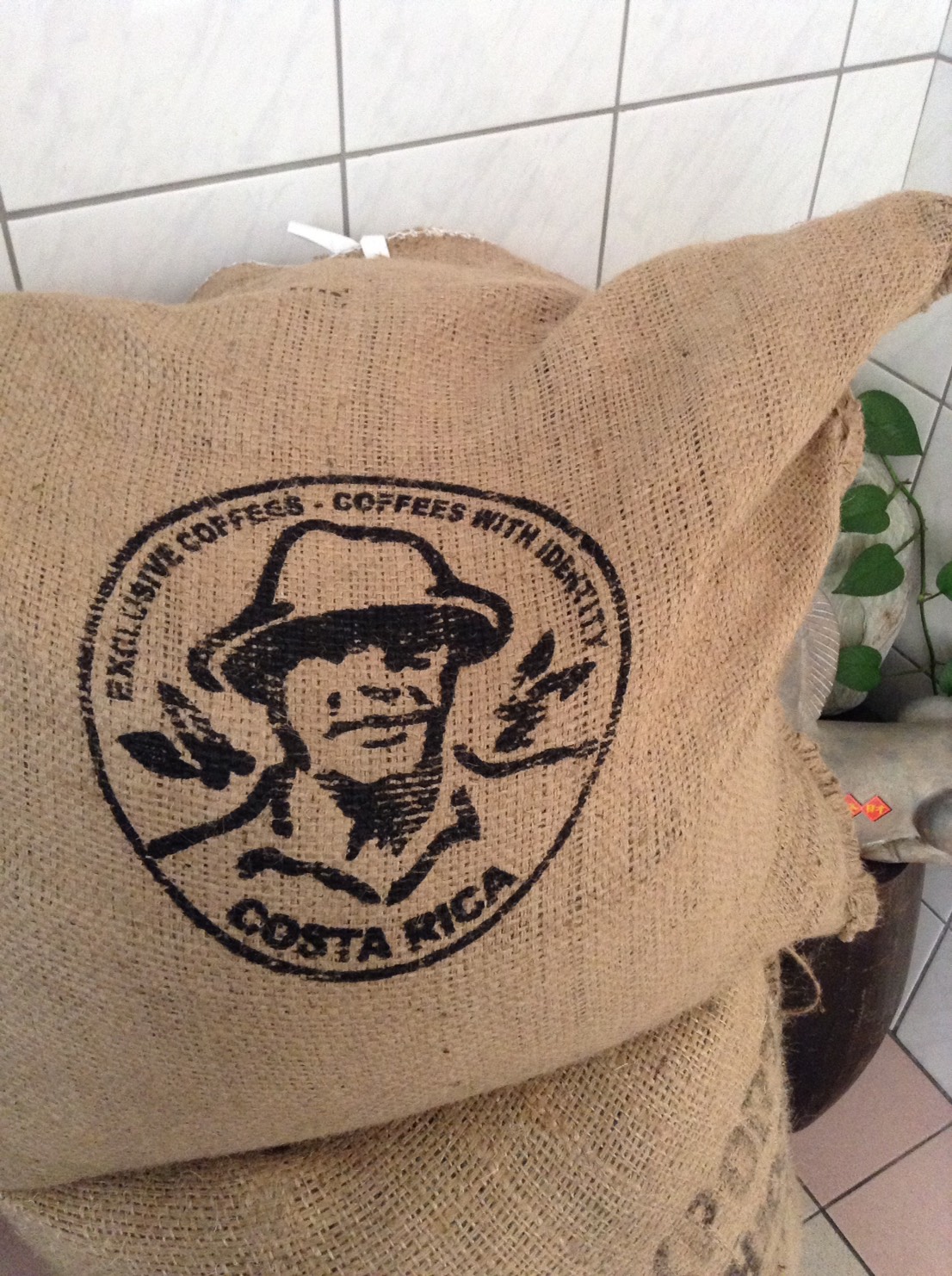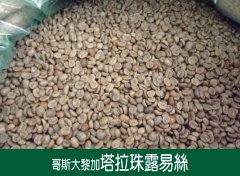Costa Rica Tarazhu Panfilo Estate Agriverde Processing Plant White Honey Iron Bika Flavor

For professional baristas, please follow the coffee workshop (Wechat official account cafe_style)
Description of White Honey Iron Bika Flavor and aroma of Panfilo Manor in Tarazu, Costa Rica
Costa Rican coffee cultivation was introduced by Cuba in 1779 and exported coffee for the first time in 1820. About 32000 existing coffee farmers have an average planting area of less than one hectare (10000 hectares).
Costa Rica has a population of 41 billion (2006) with a coffee planting area of 82500 hectares, annual production of 1.7 million bags (each bag of 60kgs), annual domestic consumption of 380000 bags, average annual national consumption of 380000 bags. 5.5kgs is higher than that of Japan (consumption 4kgs). Taiwanese are currently only slightly higher than 1kg. Costa Rica is the country where coffee was first introduced into Central America and has a long history. The coffee organization has a complete system from production to marketing. Because it is located in the Central American Gorge, there are many volcanoes, it has the natural advantages of sunshine and land, and the climate is reconciled by Pacific and Atlantic currents and sea breezes at the same time, the coffee produced has the characteristics of local micro-climate and soil conditions, in terms of quality and quantity, Costa Rican coffee has always been recognized by the world, and has been rated as one of the world-class high-quality coffee. Costa Rican coffee has been cultivated for two hundred years. It was first planted on the slopes of the Poas and Barva volcanoes, today known as the Central Valley (Central Valley). The seven main coffee producing areas are distributed from northwest to southeast, along with the inland central plateau. Costa Rican volcanic terrain with fertile volcanic ash, mild and suitable temperature and stable and abundant rainfall is one of the factors why coffee has become one of the main agricultural products in Colombia.
The Agrivid processing Plant (AGRIVID), made up of 14 families, has its own processing plant in the Tarazhu Valley. Maria Gomez, the only small farmer among its members, firmly believes that organic farming is necessary to maintain soil fertility and long-term farming. Even knowing that organic farming was a big challenge for coffee, Maria Gomez tried to convince other smallholder members of the benefits of composting as the main fertilizer. The Agrivid treatment plant has been in operation for at least 12 years and has been selling many organic vegetables since it first sold organic coffee. But the most striking thing is that the treatment plant is committed to the maintenance of the environment and the efforts to deal with the harvested coffee cherries with the least energy. The treatment plant uses only one bucket of water to handle coffee cherries for a whole day! This is really a record for the processing plant! More accurately, the Agrivid processing plant needs only 8 liters of water to handle 46 kilograms of bagged coffee cherries!
This batch of white honey coffee beans of Panfilo Manor in Tarazu Agrivid, Costa Rica, is a Typica species, growing in Tara beads, a boutique bean producing area with an average elevation of 40-1600 meters above sea level, coupled with the excellent and environmentally friendly raw bean treatment technology of the Aglivid processing plant to retain the white honey treatment of 20% pulp of coffee cherries.
Producing area: Tarazhu producing area (Tarrazu)
Manor: Panfilo Manor (Panfilo)
Variety: Typica
Sea pull: 1400m to 1600m
Treatment: to retain 20% of the flesh of coffee cherries treated with white honey
Harvest time: December to April
Flavor: Apple white grape juice, green grass aroma, light acidity, smooth syrup taste
Important Notice :
前街咖啡 FrontStreet Coffee has moved to new addredd:
FrontStreet Coffee Address: 315,Donghua East Road,GuangZhou
Tel:020 38364473
- Prev

Description of the flavor and aroma of washed Kaddura coffee at Louise Manor in Tarazu, Costa Rica
Exchange of professional baristas Please pay attention to the Coffee Workshop (Wechat official account cafe_style) 375. the most famous Costa Rican region is Tarazu, whose unique and elegant aroma, bright and soft acidity, mellow, is the evaluation of high quality coffee. The mild climate, rainy mountains and fertile soil formed by volcanoes give birth to coffee with good taste and freshness.
- Next

Description of Coffee Flavor and Flavor in No.1 place of SL28 White Honey COE in Herba processing Farm, Costa Rica
For the exchange of professional baristas, please follow the coffee workshop (Wechat official account cafe_style) SL28 White Honey COE, Costa Rica Herba processing plant, No. 1 coffee flavor and flavor description Herba processing plant is located in the western valley producing area of Costa Rica, located on the hillside about five kilometers north of Naranjo, founder Barrantes has been established since its establishment.
Related
- Detailed explanation of Jadeite planting Land in Panamanian Jadeite Manor introduction to the grading system of Jadeite competitive bidding, Red bid, Green bid and Rose Summer
- Story of Coffee planting in Brenka region of Costa Rica Stonehenge Manor anaerobic heavy honey treatment of flavor mouth
- What's on the barrel of Blue Mountain Coffee beans?
- Can American coffee also pull flowers? How to use hot American style to pull out a good-looking pattern?
- Can you make a cold extract with coffee beans? What is the right proportion for cold-extracted coffee formula?
- Indonesian PWN Gold Mandrine Coffee Origin Features Flavor How to Chong? Mandolin coffee is American.
- A brief introduction to the flavor characteristics of Brazilian yellow bourbon coffee beans
- What is the effect of different water quality on the flavor of cold-extracted coffee? What kind of water is best for brewing coffee?
- Why do you think of Rose Summer whenever you mention Panamanian coffee?
- Introduction to the characteristics of authentic blue mountain coffee bean producing areas? What is the CIB Coffee Authority in Jamaica?

